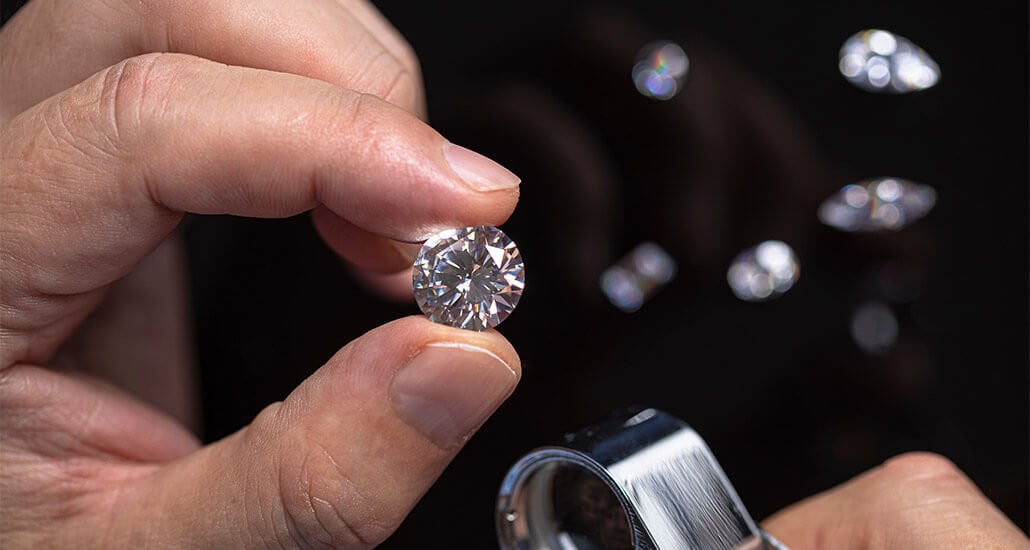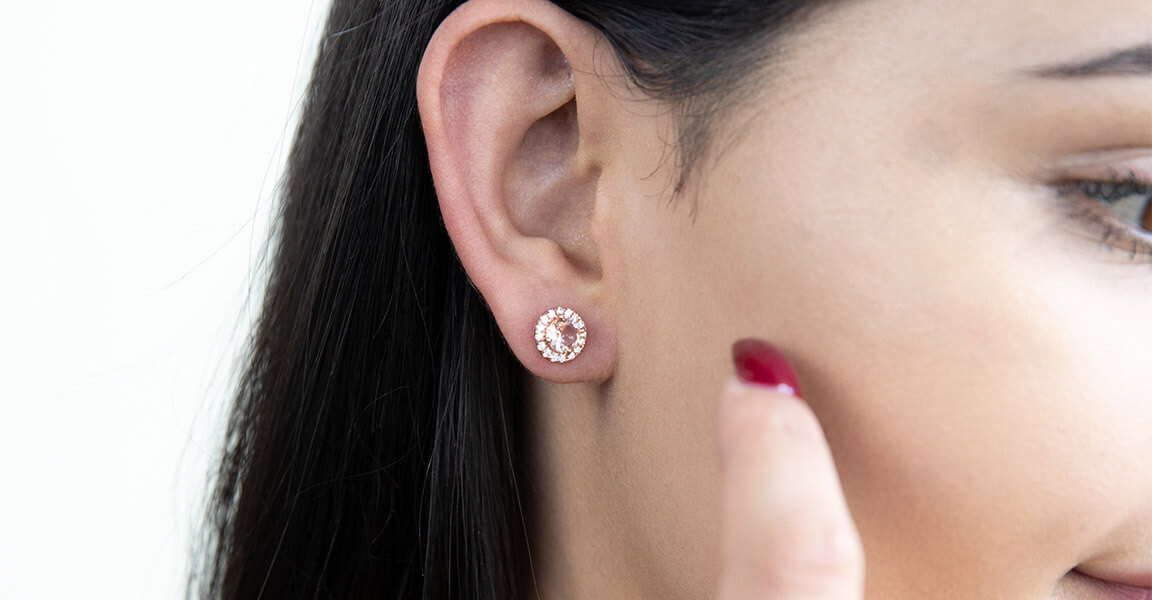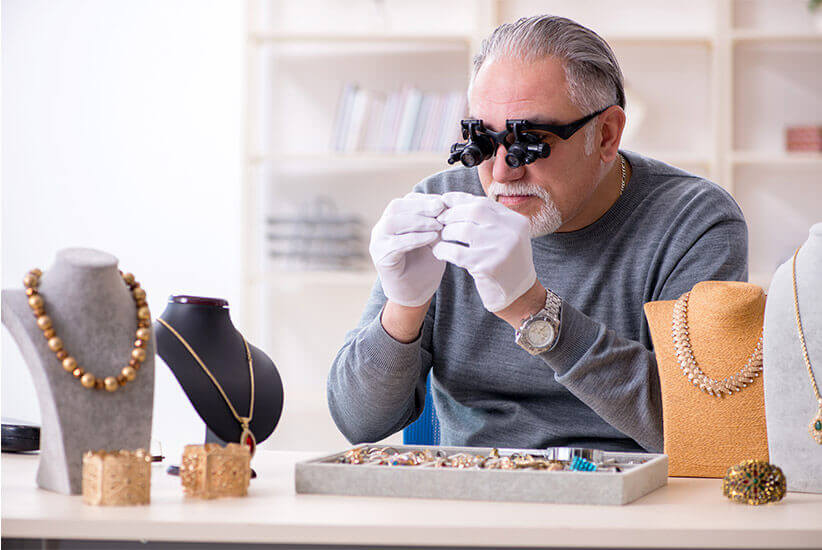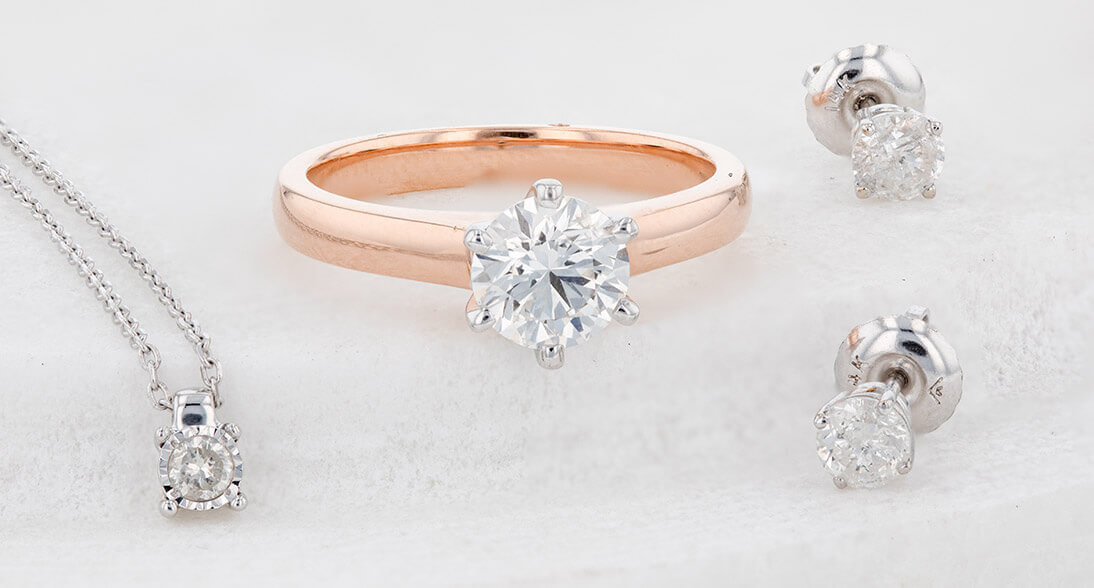Diamond jewellery can be very deceiving, as while a stone may appear real to the naked eye, it could be nothing but a simulant diamond crafted from less durable substances like cubic zirconia or moissanite.
Without the proper tools or expertise, simulant diamonds can be extremely difficult to pinpoint, meaning not only could you be walking around with a 'diamond' that you believe is real. But you also could have potentially dropped some serious cash on something that is not worthy of the price tag.
Thankfully, there are many tips and tricks out there to see if your diamond jewellery is real without having to pay a visit to your jeweller or invest in high-price magnifying equipment.
Here's how to see if a diamond is real at home:
How To See If A Diamond Is Real At Home Overview:
- Check For Imperfections
- Examine The Facets
- Look At The Metal
- The Fog Test
- The Sandpaper Trick
- Chase The Rainbow
Check For Imperfections
Most diamonds are not flawless, and therefore will have tiny imperfections known as inclusions that occur during the stone's formation. Simulant diamonds, on the other hand, will be almost perfect. So, one of the easiest ways of telling whether your diamond is real or not is to analyse its imperfections or lack thereof.
Using a magnifying glass or even a pair of prescription glasses lenses, examine the stone. Search for tiny black spots, fractures and air bubbles within the stone, these are a general indicator that your stone is real as only around 0.01% of diamonds are practically flawless.
However, when assessing your stone you should also be mindful of any scratches that appear on the surface of your diamond. Diamonds do not scratch easily and therefore this could be an indication that your piece is a fake.
Examine The Facets
When exploring your diamond's inclusions with a magnifying glass, you should also take a moment to examine its facets. A diamond's facets are the geometric shapes that occur on the surface of the diamond when it's cut into a particular shape. These facets are responsible for giving the stone its sparkle which naturally occurs when light reflects off each facet.
As they are cut by highly skilled diamond cutters, authentic diamonds have relatively sharp edges and facets, while inauthentic stones are often created by moulds that melt the glass or zircon into a diamond shape. When these moulds are used, the simulant diamond will often have soft, rounded edges.
It is important to note that while most moissanite and cubic zirconia stones are crafted from a special mould, there is the occasional stone that is cut in the same way that diamonds are. These stones, while not real diamonds, will have sharper edges.

Look At The Metal
While this is not a 100% foolproof test, it does work in some cases. The metal that entraps your stone can often give away whether your diamond is real or not. Since diamonds are extremely rare and valuable, the metal within the setting of your piece is often of a higher quality. Real diamonds are usually set in white, yellow or rose gold as well as silver and platinum.
Fake diamonds will usually be set in cheaper, lower quality metals or will be silver or gold plated. Unless your piece is over 100 years old, solid gold, silver and platinum jewellery will usually have a small hallmark engraved on the back indicating that it is a genuine solid metal.
These hallmarks usually consist of three numbers and letters. The hallmarks which most fine jewellery brands out there utilise are 18K, 14K, 10K, 750, 585 and 375. If your piece has one of these hallmarks engraved on it, this may be an indicator that your diamond is real.
The Fog Test
Another hack you can utilise to determine whether your diamond is real or not is your breath. Real diamonds do not retain heat from elements such as steam and the heat of your breath, this means that when you breathe onto your diamond it will not fog up.
Simulant diamonds, on the other hand, will fog up. So if you suspect that your diamond is a fraud, simply breathe on the stone and let the results speak for themself. The difficulty with this trick, however, is the size of the diamond in question.
With smaller diamonds, it can be difficult to tell if a diamond is fogged up, so if possible, try this trick with a diamond you know is fake and then compare the two stones. If both stones fog the same, you'll know your 'diamond' is not real.
The Sandpaper Trick
This hack is one for the risk-takers who are determined to figure out if their stone is real or not. As one of the toughest minerals on earth, items like sandpaper will not damage a genuine diamond. They will, however, physically damage simulant diamonds which are made out of much weaker substances. This makes sandpaper an excellent hack for examining your diamond's authenticity or lack thereof.
Grabbing a piece of regular sandpaper (not one that is covered in diamond powder), gently rub the paper over the surface of your stone. If it doesn't become visibly scratched, then this is a lucky day for you. If it does, we've got some bad news for you. Bear in mind, you should only use this trick if you do not mind damaging a fake diamond.
Chase The Rainbow
The way one of these precious stones reflects light is incredibly unique and it will often cause a rainbow to appear on its surface. Referred to as a diamond's fire, rainbows occur when light passes through the surface of the stone, begins to bounce around inside of it and then out again.
This is another great way to tell if your diamond is real or not, as while a real diamond's fire and brilliance will reflect on the outside of the stone, a fake diamond's will reflect on the inside. So if you suspect your diamond is nothing but an imitation, go outside and hold it up to the light.
If you're still a little conflicted by the results of your at-home tests, your safest bet is to take the diamond and pay a visit to a trusted jeweller. These people look at diamonds every day, so they know their stuff and will quickly be able to determine whether your diamond is a fake.
More About Diamonds:
- Diamond Guide
- Diamond Price Guide
- Diamond Style Guide
- Diamond Buying Guide
- Diamond Cleaning Guide
- Engagement Ring Guide
- Diamond Jewellery Brands
- Diamond Earrings Buying Guide
- How To Store Diamond Jewellery
- What To Know About Diamonds Before Buying A Ring
- How To Buy A Diamond Ring Without Getting Duped





.png)







